The text ‘Whistle and I’ll come to you’ by Susan Hill is currently taught on the Edexcel International GCSE English Language Paper 2 curriculum. It is one of the 10 prose and poetry anthology texts which students answer on for Question 1. This complete ‘Whistle and I’ll come to you‘ IGCSE resources pack comes packaged in a cohesive English language unit. It includes line-by-line annotations, quiz questions with an answer key, a mind mapping activity, rubric and exemplar full mark answer.
‘Whistle and I’ll come to you’ by Susan Hill is an extract from the novel ‘The Woman in Black’. It tells the story of lawyer and narrator Arthur Kipps, who travels to Eel Marsh House to settle the affairs of the late Mrs. Drablow. However, he quickly realises that the house is haunted by Mrs. Drablow’s sister. In this extract, he grapples with his desire to apply logic to his experience of a severe storm during which he has a strong emotional reaction to what he believes is a child crying on the marsh.
Susan Hill uses vivid imagery to convey a traditionally Gothic atmosphere of fear and suspense; but how can we support students to capture that in their exam essays? How can we break it down to consider not only the literal description of the severe storm, but how the depiction of the weather reflects the wider portrayal of the narrator’s conflicted mindset?
‘Whistle and I'll come to you’ IGCSE Scheme of Work
I’ve created a scheme of work for busy teachers to take your
students step-by-step through the text. It contains everything from an engaging,
thought-provoking starter, to questions about the film trailer. There are also detailed
annotations of the text and exam practice (rubric, mind mapping activity and
exemplar answer) for the 30-mark question on Language Paper 2. This Whistle and
I’ll come to you IGCSE resource contains editable Google
slides, quizzes with answer keys, sample exam questions, a mind mapping
activity and close textual annotations of the whole GCSE text. All
activities are ready to download and print in PDF form or there are links
for you to personalise them if you wish.
Edexcel IGCSE English Language Exam Paper 2
The 1 hour 30 minutes Edexcel IGCSE English Language Paper 2 exam is split into Section A and Section B. Section A is the reading assessment and candidates are presented with one of the 10 prose and poetry anthology texts. The prose texts are between 1.5 and 3.5 pages long and the texts are approximately 1 page. They have 1 30-mark question to answer, which is usually based on a broad theme from the selected text, such as death, strong emotions, sympathy or conflict. Furthermore, candidates are provided with 3 bullet points which give guidance as to what to include in the response.
Section B is an imaginative writing assessment. Candidates choose between three options, which are normally loosely based on the Section A text.
· Question 2 tends to be a personal question. For example, write about a time you overcame a challenge. The response can be real or imagined.
· Question 3 tends to give the title of a story, and candidates are required to write the story.
· Question 4 usually provides a set of 2-3 images which students may use as a stimulus to write a story.
Edexcel 'Whistle and I'll come to you' Analysis and Resources
To introduce the text ‘Whistle and I’ll come to you’, I ask students to brainstorm ways writers incite fear in readers. Then, they discuss for 5 minutes or so in pairs or small groups before we do class feedback. These Whistle and I’ll come to you IGCSE resources contain a completed brainstorm with ideas to discuss with students. As the text contains Gothic conventions, this is an effective way to ascertain what students already know about suspenseful writing. For an extension or discussion activity, students discuss the scariest book, film or series they have ever consumed.
The Woman in Black narrative and film trailer
Before diving into the text, I outline the novel from which the extract is taken, The Woman in Black. I start with the film trailer as I find that it engages students. If you wish, you can ask students to make notes and discuss aspects of the trailer which relate to the text. After viewing the trailer, we read a summary of the novel so that students can grasp the context of the extract. The Whistle and I’ll come to you IGCSE activities contain a multiple choice quiz which can quickly assess students’ understanding of the story.
Whistle and I’ll come to you line-by-line analysis
Before close textual analysis, I often ask students to do an initial reading for the tone and literal reading. It is a fairly straightforward text for students to understand on a surface level – a description of a storm experienced in an old house which frightens the narrator. The challenge comes in unpacking how Hill explores the narrator’s complex struggle between logic and emotion. As well as that, Hill implores the reader to question whether there is a supernatural presence. Close textual annotations are a way to support students to unpack the deeper meanings.
When it comes to closely analysing the lines of the text, there are a few ways of approaching the activity. You can read and annotate together with students completing the annotations in real time. Alternatively, you can split students into groups and ask each group to focus on a certain number of lines before feeding back to the class. Or you could read and discuss, then ask students to complete the annotations for homework.
There are many ways of approaching close textual analysis. I find that varying the method for different texts keeps students interested through the unit. This ‘Whistle and I’ll come to you’ IGCSE resources pack contains detailed line-by-line annotations of the whole text.
Edexcel Whistle and I’ll come to you IGCSE Quiz with Answer Key
After analysing the text, I do a quick AFL quiz with students to assess their understanding of the language and structure of the text. Then, I introduce exam practice questions. Editable quiz questions for a straightforward, low stakes multiple choice quiz with answers are available on the slides and in PDF form with these Whistle and I’ll come to you IGCSE resources. Depending on your time and the nature of your class, you can do this as a whole class activity on the interactive whiteboard or hand out for students to do in pairs or individually.
Whistle and I’ll come to you Edexcel Practice Exam Questions
Question 1 on the IGCSE English Language Paper 2 exam is a 30-mark question on one of the 10 anthology prose and poetry texts. You can find them in Part 2 of the anthology. Although it’s one question, it’s fairly high stakes as students don’t have anywhere to hide; they must perform on this question. I reinforce to them that they must know all 10 of the texts very well to write a detailed essay on just one of them in the exam.
There are some steps to take before asking students to write a response. Firstly, it may be useful to take students through the rubric so that they familiarise themselves with how the response is awarded. Then, you can take students through the example PETER paragraph (point, evidence, technique, explain, refer). If you wish, you can ask them to order the parts of the example paragraph, so they grapple with the concept of a cohesive paragraph. This way, there are scaffolds in place to support students to produce high quality responses. Also, you can demonstrate how the paragraph hits the mark scheme pointers, such as exploring techniques and use of vocabulary for effect. It also directly links to the question, which is something examiners look for.
In this Whistle and I’ll come to you GCSE scheme of work, there is a rubric, paragraph structure and sorting activity so that students can see how to write a cohesive analytical paragraph. This is a useful way to ease hesitant students into writing a full analysis of the text.
Whistle and I’ll come to you Mind Mapping Activity
Students often struggle to plan their ideas; they are left wondering; how do I start? What do I write and in what order? A mind map is a good tool for students to revise the texts. Also, it helps them produce a cohesive analysis and plan out their ideas so that they avoid repetition.
I have included an example of a mind map in these ‘Whistle and I’ll come to you’ IGCSE resources, useful for analysis and making thematic links between different parts of the text. Additionally, I split the mind map into sections which closely link to the example question: childhood memories, setting and narrator’s mindset. Then students can make notes for each of these sections.
During the task, they can use colours, notes, diagrams or images (however their brain works) to connect and order their ideas. After they have made notes, they can order and organise their notes depending on how they would like to structure their essay. This helps them to compose a cohesive and perceptive exam response.
Edexcel Whistle and I’ll come to you IGCSE Exemplar Analytical Essay
Included in these ‘Whistle and I’ll come to you‘ IGCSE resources, I have provided an editable full-mark example answer for Question 1, worth 30 marks. I find it the most effective to ask students to have a go at answering first. Next, do some peer or teacher marking of their answers, then present them with the full-mark response. Often, I find if students achieve a mark they are unhappy with, they ask ‘what do I have to do to increase my mark?’ Or, they might say ‘how do I make it better?’ These are great questions as it shows engagement with the improvement process. This is when providing them with an exemplar analytical essay can help them ‘see’ exactly how to plug the gaps in their own response.
There are examiner’s comments in the notes section of the presentation about this response. Essentially, to be awarded full marks, there should be evidence of perceptive analysis. I explain to students that the answer goes beyond ‘obvious’ points. More, it draws out the writer’s range of ideas and different possible interpretations of readers’ reactions. Consider whether the writer changes their perspective and how language and structure interconnect for effect. For example, a long syndetic list can also contain strong, emotive verbs. Quotations must be relevant to the points made for a student to achieve the top band of the mark scheme, and multiple quotations should be used throughout the response.
Edexcel GCSE English Language Imaginative Writing Practice
There are also a couple of writing prompts included in these Whistle and I’ll come to you IGCSE resources. Time-permitting, this is an excellent text to base a creative or transactional writing piece around as it is so steeped in vivid imagery. You could have the students write an article, story or letter based on the text. This can help develop skills required for Section B of Paper 1 (Transactional Writing) and Section B of Paper 2 (Imaginative Writing), whilst increasing their engagement with the text Whistle and I’ll come to you.
Edexcel GCSE English Language Revision
To sum up, some of the best techniques for teaching the 10 prose and poetry texts include:
- Hook students with an intriguing starter activity
- Use alternative methods to closely analyse and annotate the text
- Quiz students for quick AFL strategy to assess whether they are engaging with the text
- Practise past paper questions
- Study model answers, including examples of typical mistakes students make in the exam responses
- Offer an optional creative activity as homework or an extension to challenge students’ perceptions of the text
Good luck teaching Whistle and I’ll come to you. Despite the Edwardian setting, the suspenseful tone and elements of a typical ghost story are aspects of this text I find students enjoy and engage with. Comment below if you can add any useful teaching and learning techniques for this text.
If you enjoyed this article about teaching ‘Whistle and I’ll come to you’, you might also find value in my Edexcel IGCSE Paper 2 guides and resources for ‘An Unknown Girl‘ and ‘Disabled’. There are also Edexcel IGCSE English Language Paper 1 guides and schemes of work for many of the set texts, including Passage to Africa and Explorers or Boys Messing About? Either way, taxpayer gets rescue bill. Follow my store for more as resources are constantly being added.

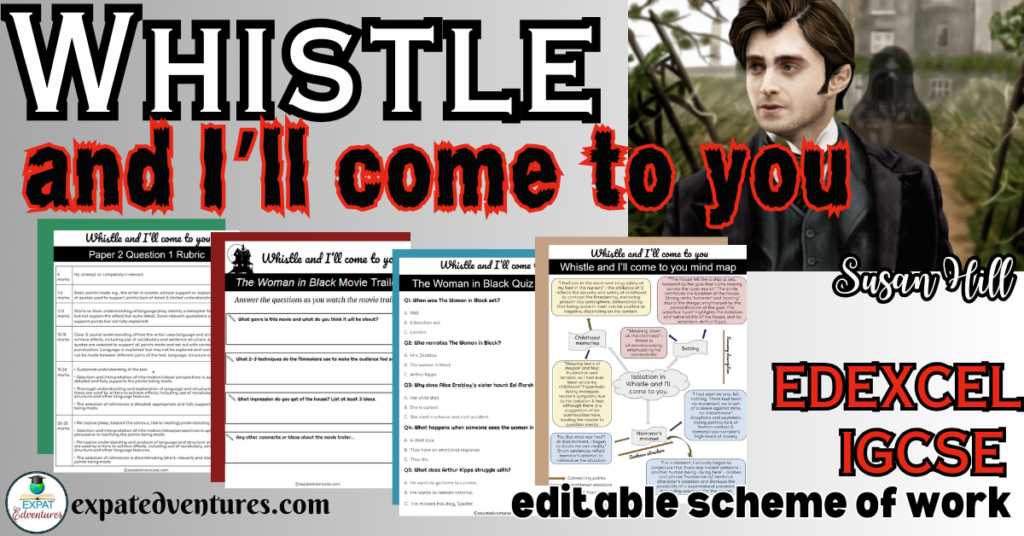

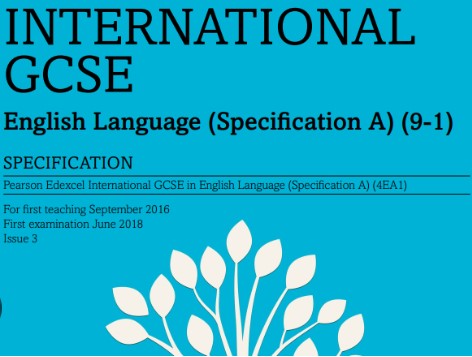
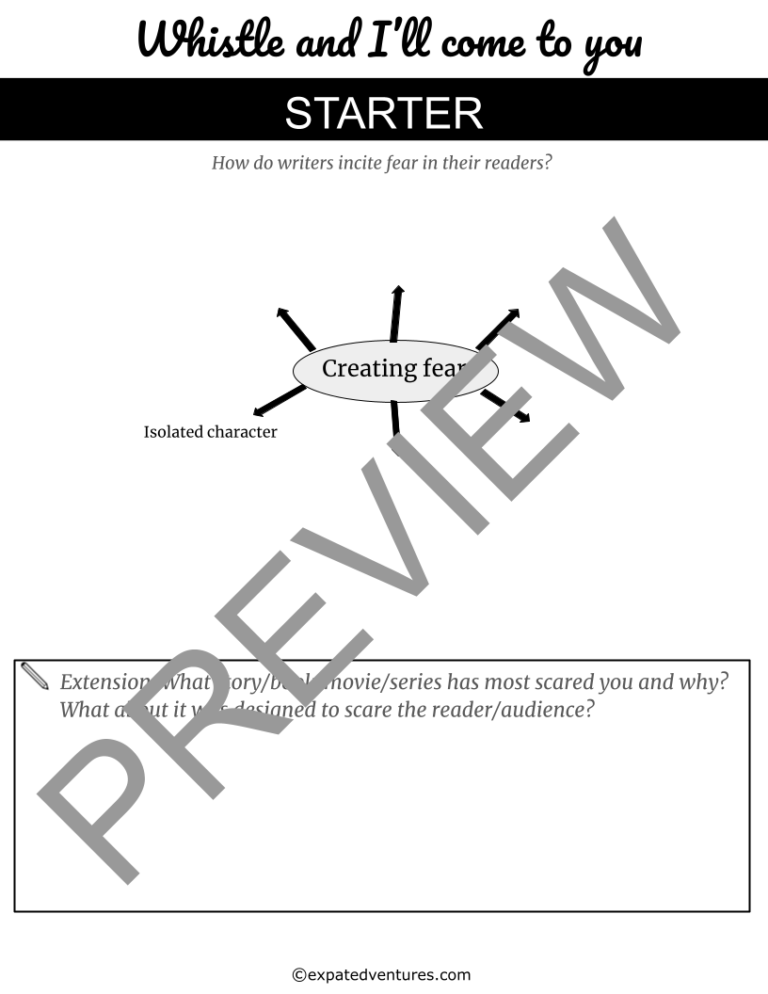
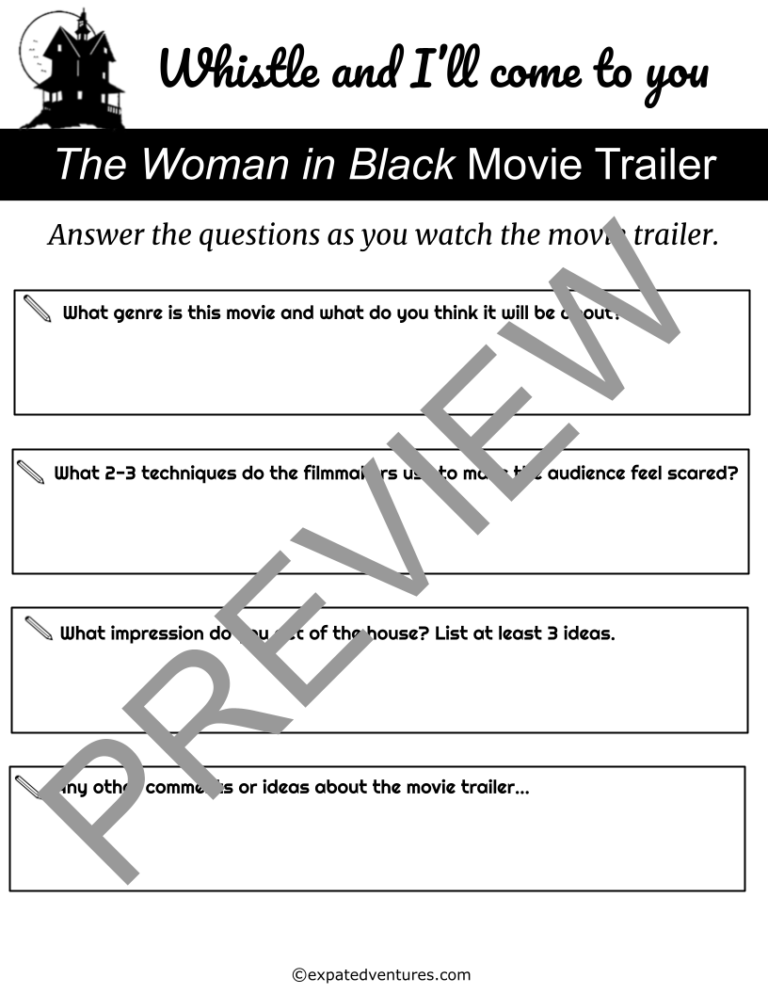
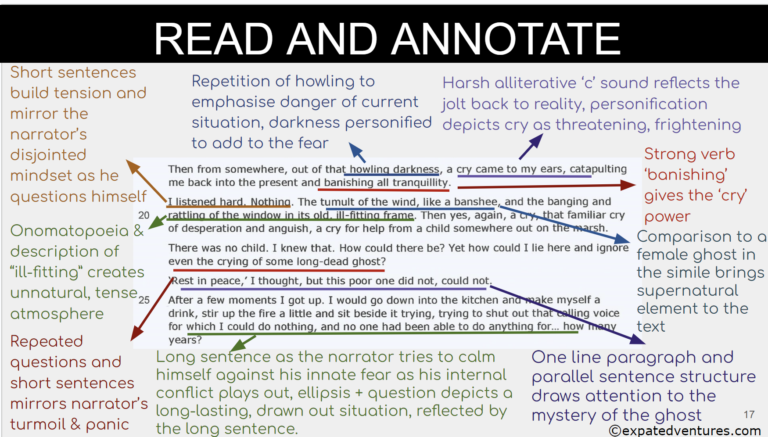
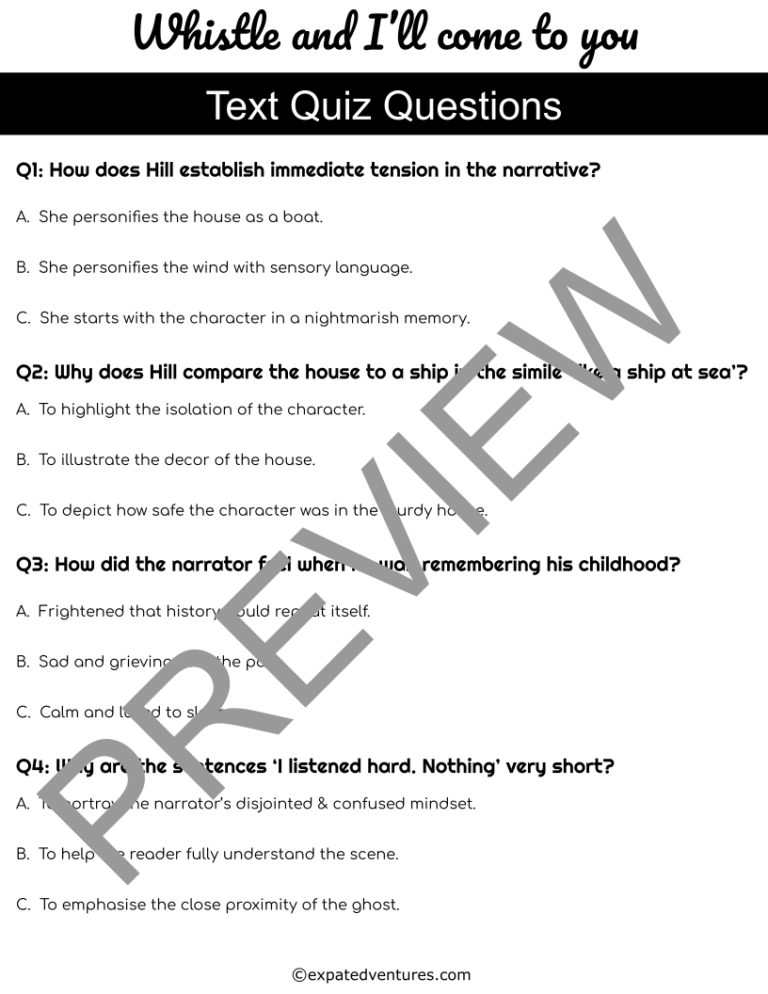
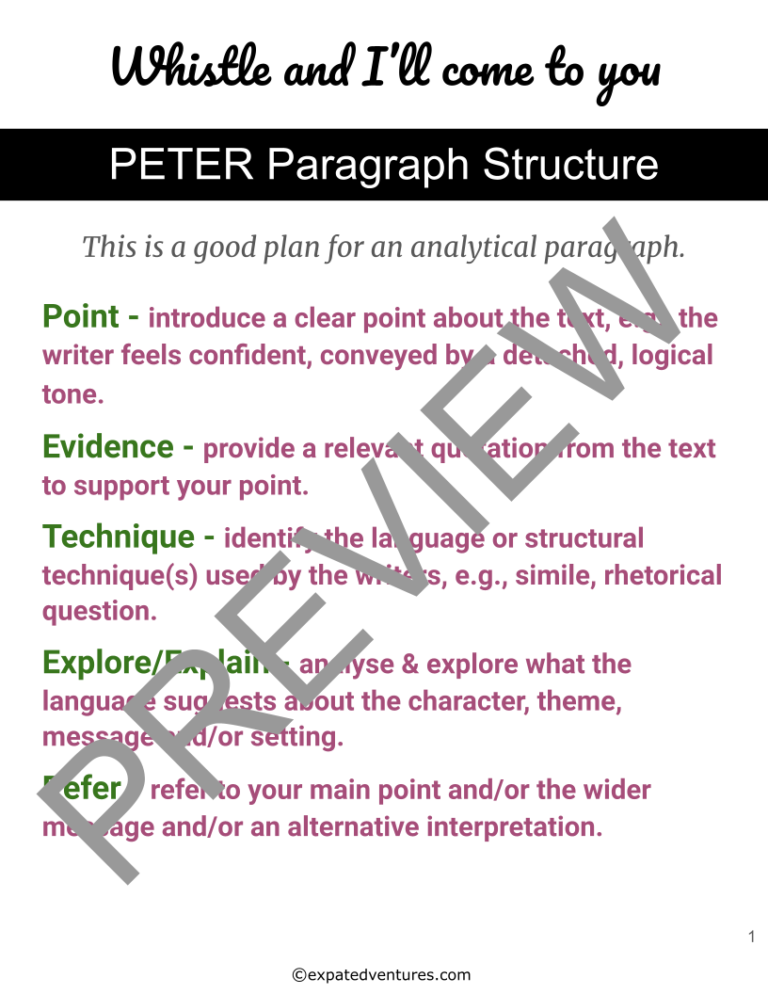
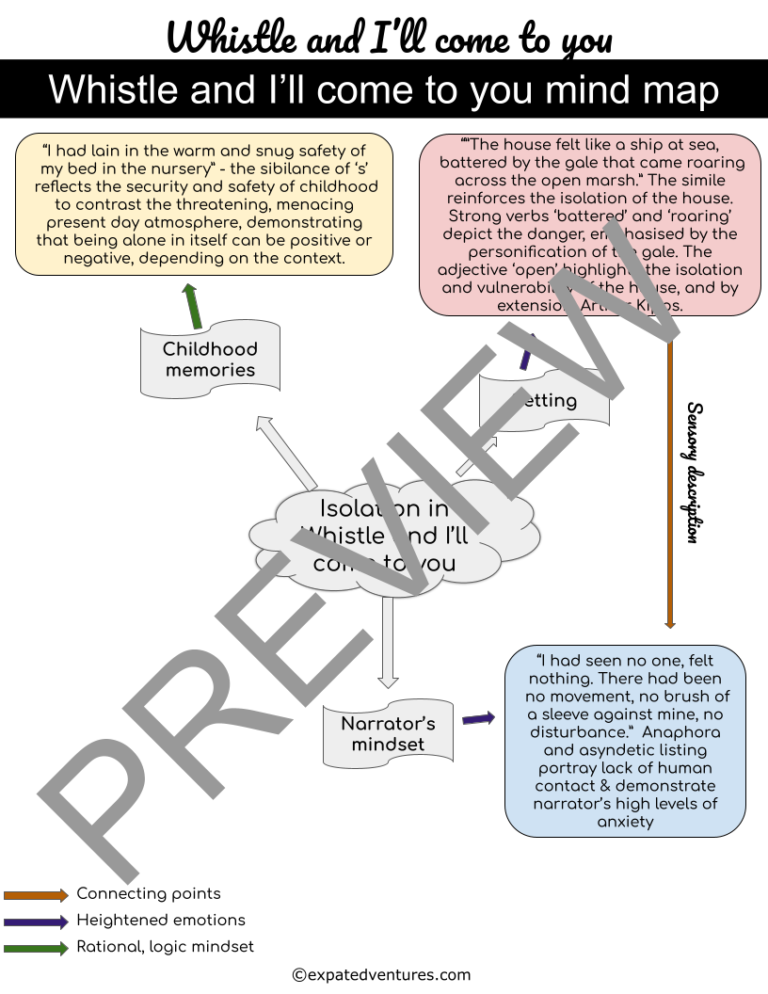
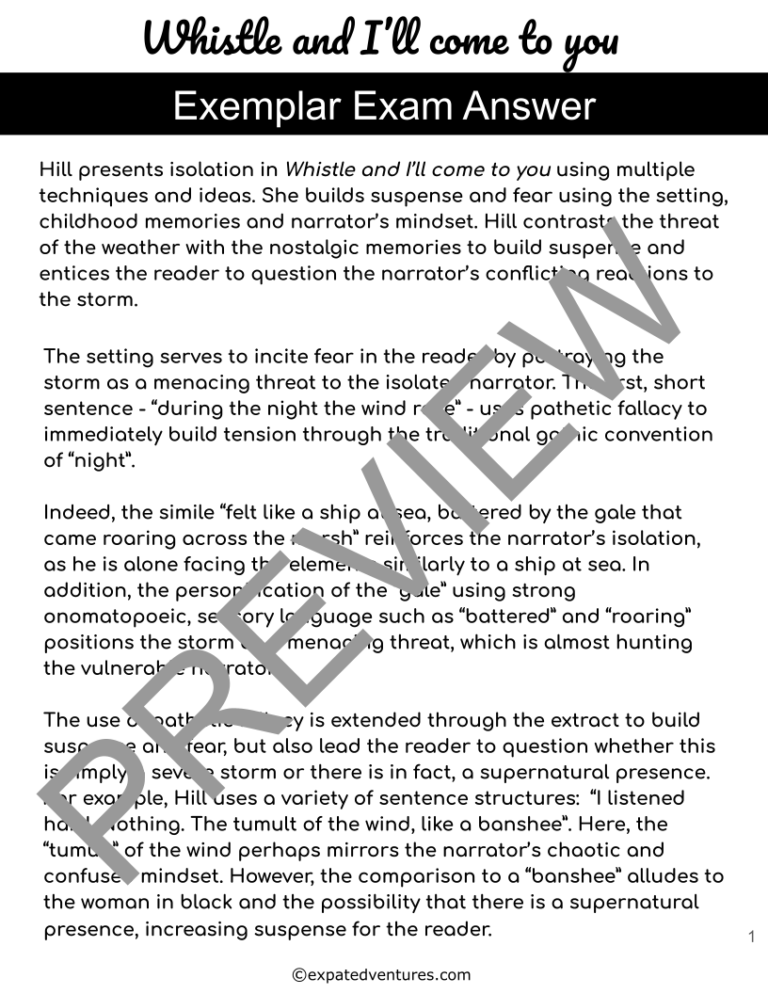
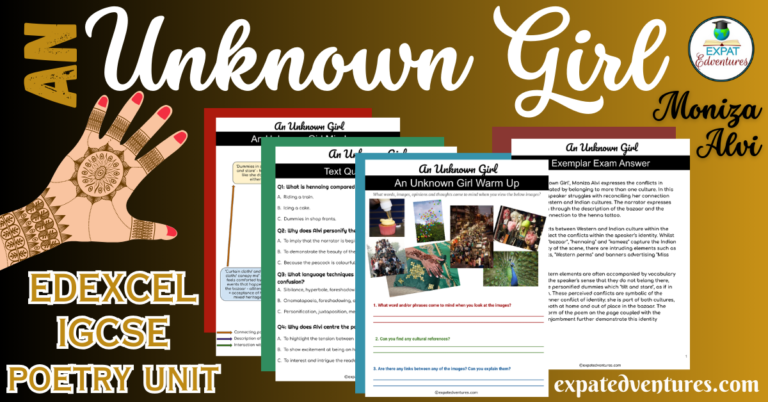
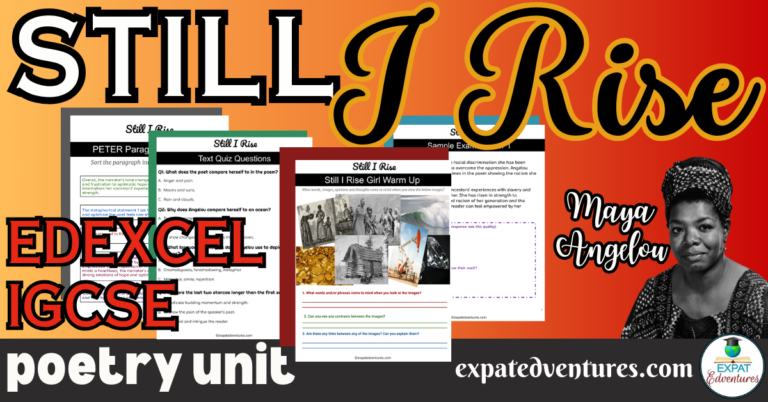

Pingback: Bright Lights of Sarajevo IGCSE Resources - Expat Edventures